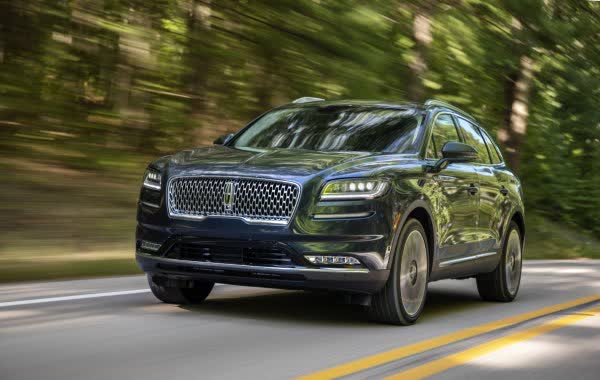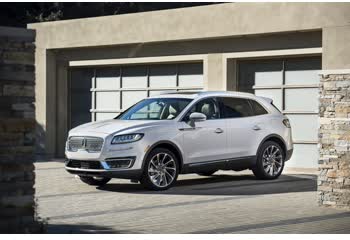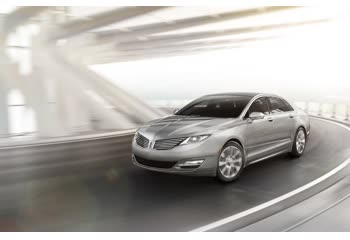Everything you need to know about specifications and performance - Lincoln Nautilus 2020 - 2.0 (250 Hp) AWD Automatic

Overview:
Lincoln Nautilus 2020 How many horsepower?
The engine power of the Lincoln Nautilus 2020 is 250 Hp @ 5500 rpm..
What is the Lincoln Nautilus 2020 engine?
Lincoln Nautilus 2020 engine is EcoBoost. (Click to see other cars using the same engine)
How much gasoline does a Lincoln Nautilus 2020 consume?
The Lincoln Nautilus 2020 consumes 10.7 liters of gasoline per 100 km
General:
Brand: Lincoln
Model: Nautilus
Generation: I (facelift 2020)
Modification (Engine): 2.0 (250 Hp) AWD Automatic
Start of production: November, 2020
End of production: April, 2023
Powertrain Architecture: Internal Combustion Engine
Body type:Sports Utility Vehicle (SUV)
Seats: 5
Doors: 5
Engine:
Engine systems: Start & Stop System
Power: 250 hp @ 5500 rpm.
Torque: 380 nm @ 3000 rpm.
Engine Model/Code:EcoBoost
Number of cylinders: 4
Engine configuration: Inline
Number of valves per cylinder: 4
Fuel injection system: Direct injection
Engine aspiration: Turbocharger, Intercooler
Valvetrain: DOHC
Engine oil capacity: 5.2 l
Coolant: 9.2 l
Engine layout: Front, Transverse
Cylinder Bore: 86.36 mm
Piston Stroke: 83.06 mm
Compression ratio: 10:1
Performance:
Fuel Type: Petrol (Gasoline)
Fuel consumption (economy) - urban: 11.8 l/100 km
Fuel consumption (economy) - extra urban: 9.4 l/100 km
Fuel consumption (economy) - combined: 10.7 l/100 km
Weight-to-power ratio: 7.9 kg/Hp, 127 Hp/tonne
Weight-to-torque ratio: 5.2 kg/Nm, 193.1 Nm/tonne
Space:
Kerb Weight (kg): 1968
Trunk (boot) space - maximum: 1948 l
Trunk (boot) space - minimum: 1053 l
Permitted trailer load with brakes (12%): 1588 kg
Fuel tank capacity: 68 l
dimensions:
Length: 4826 mm
Width: 1999 mm
Height: 1681 mm
wheelbase: 2850 mm
Width with mirrors folded: 1999 mm
Width including mirrors: 2187 mm
Front track: 1646 mm
Rear (Back) track: 1643 mm
Minimum turning circle (turning diameter): 12 m
Powertrain, Suspension and Brakes:
Drivetrain Architecture: The Internal combustion Engine (ICE) drives the front wheels permanently, and the rear wheels are driven through an electrically or mechanically operated clutch if necessary.
Drive wheel: All wheel drive (4x4)
Number of gears and type of gearbox: 8 gears, automatic transmission SelectShift
Front brakes: Ventilated discs, 350x32 mm
Rear brakes: Disc, 345x19 mm
Assisting systems: ABS (Anti-lock braking system)
Steering type: Steering rack and pinion
Power steering: Electric Steering
Tires size: 245/50 R20; 265/40 R21
Wheel rims size: 20; 21
Front suspension: Independent, type McPherson with coil Spring and anti-roll bar
Rear suspension: Independent multi-link Spring suspension with stabilizer
See also

Last generation.
Its production began in 2023 until Now

Other generation.
Its production began in 2018 until 2020

Same engine. (EcoBoost).
Its production began in 2012 until 2016

Same engine. (EcoBoost).
Its production began in 2016 until 2020

Write a comment